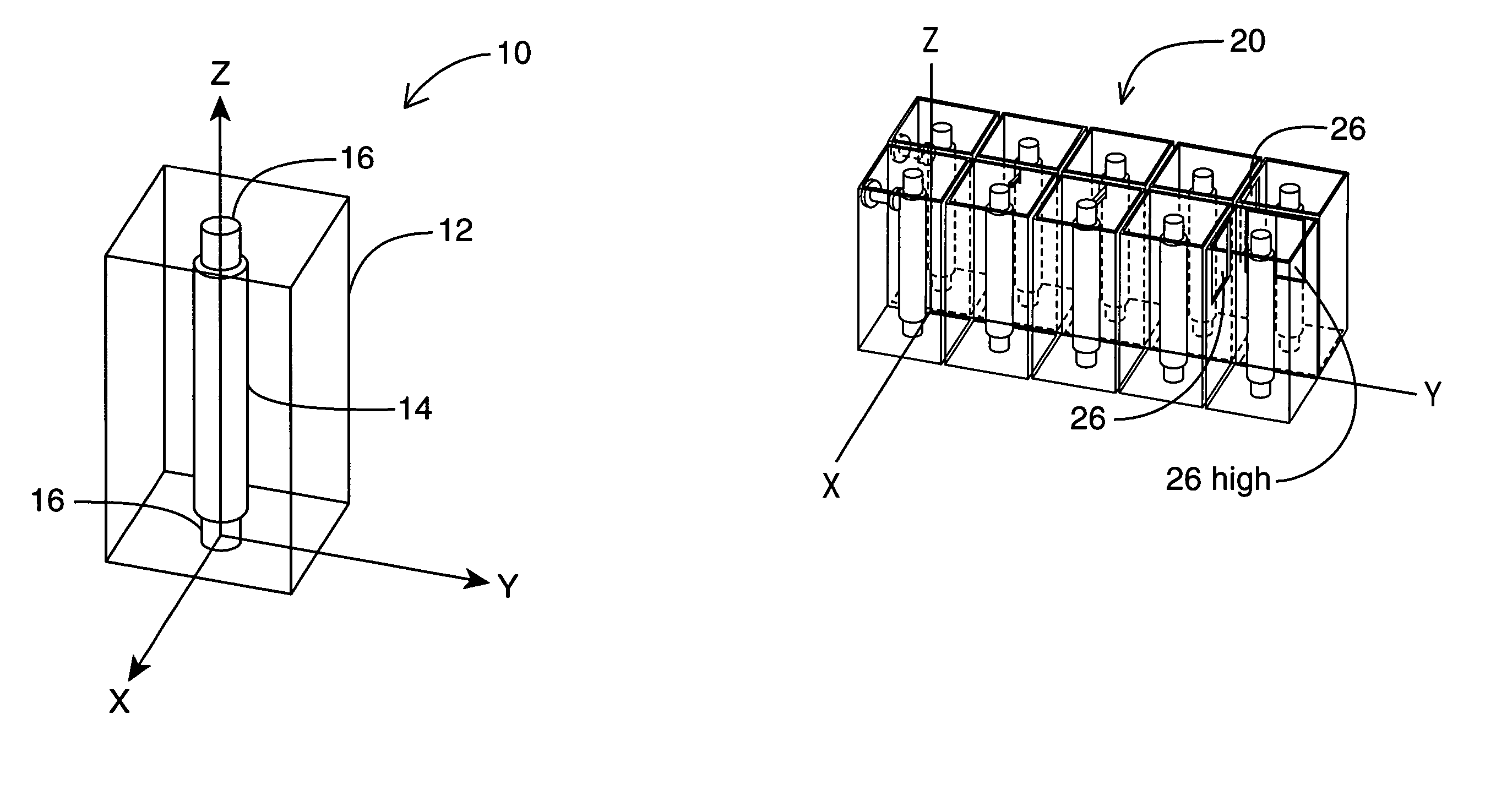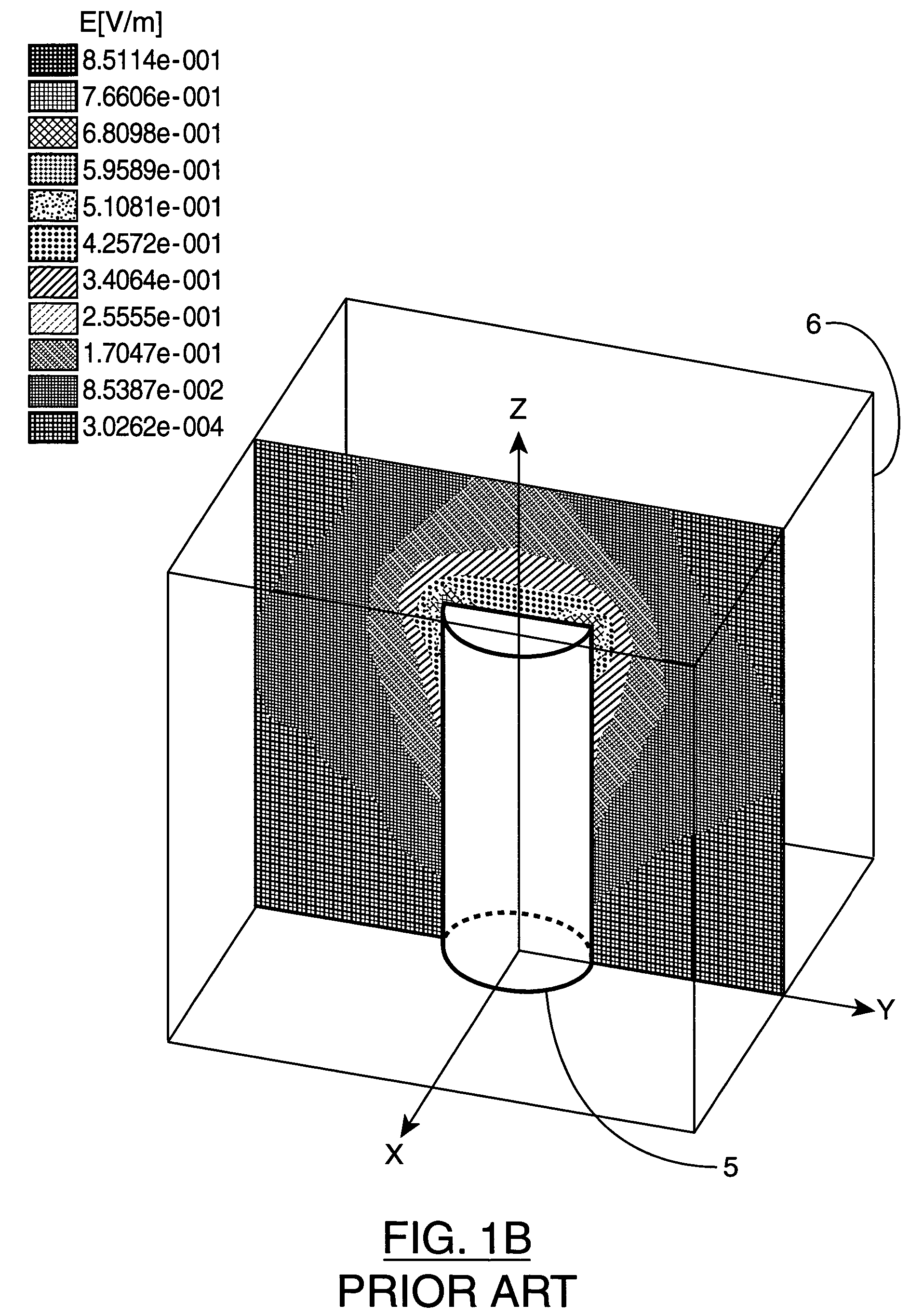Microwave resonator and filter assembly
a technology of resonator and filter assembly, which is applied in the direction of waveguide type devices, resonators, basic electric elements, etc., can solve the problems of insufficient spurious performance, small tuning range, and various practical and operational limitations of conventional resonator structures currently being used in microwave filters, and achieve the effect of small diameter to length ratio
- Summary
- Abstract
- Description
- Claims
- Application Information
AI Technical Summary
Benefits of technology
Problems solved by technology
Method used
Image
Examples
Embodiment Construction
[0036]FIGS. 2A and 2B illustrate a preferred embodiment of a half wave resonator assembly 10, built in accordance with the present invention. Resonator assembly 10 operates in the TM mode, exhibits a high quality factor (Q) value and good spurious performance as will be described. Further, when a number of resonator assemblies 10 are combined into a resonator filter as will be discussed, it is possible to cancel out stray couplings without the need to use diagonal probes as will be described. Resonator assembly 10 consists of a resonator cavity 12, a cylindrical dielectric resonator 14 and end supports 16 where the dielectric resonator 14 and end supports 16 are mounted within the metallic cavity 12.
[0037]Resonator cavity 12 is a conventional resonator cavity preferably constructed of silver-plated aluminum, although many other types of materials could be used (e.g. copper, brass, etc.) As shown, resonator cavity 12 has a larger cavity height than that associated with conventional T...
PUM
 Login to View More
Login to View More Abstract
Description
Claims
Application Information
 Login to View More
Login to View More - R&D
- Intellectual Property
- Life Sciences
- Materials
- Tech Scout
- Unparalleled Data Quality
- Higher Quality Content
- 60% Fewer Hallucinations
Browse by: Latest US Patents, China's latest patents, Technical Efficacy Thesaurus, Application Domain, Technology Topic, Popular Technical Reports.
© 2025 PatSnap. All rights reserved.Legal|Privacy policy|Modern Slavery Act Transparency Statement|Sitemap|About US| Contact US: help@patsnap.com



